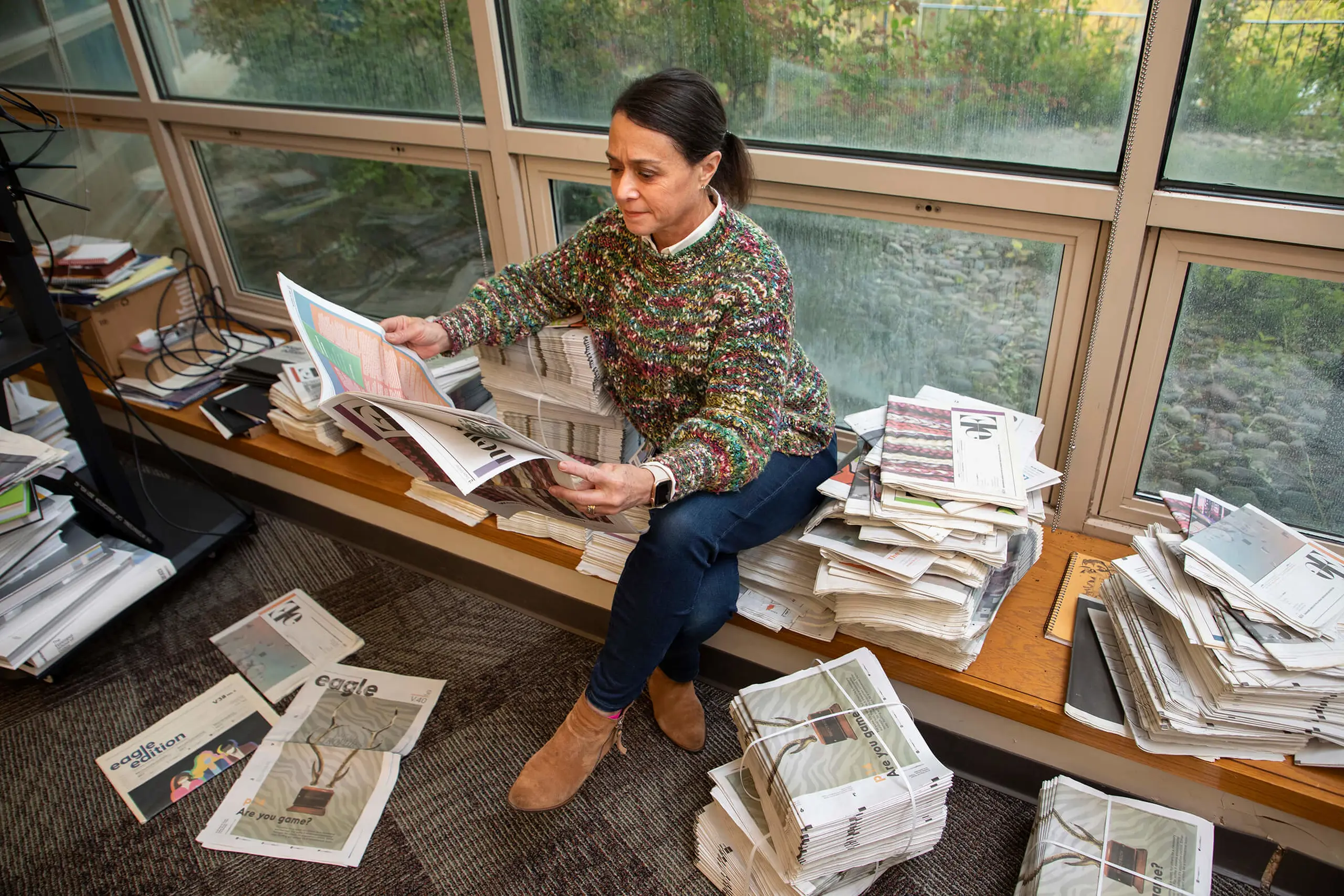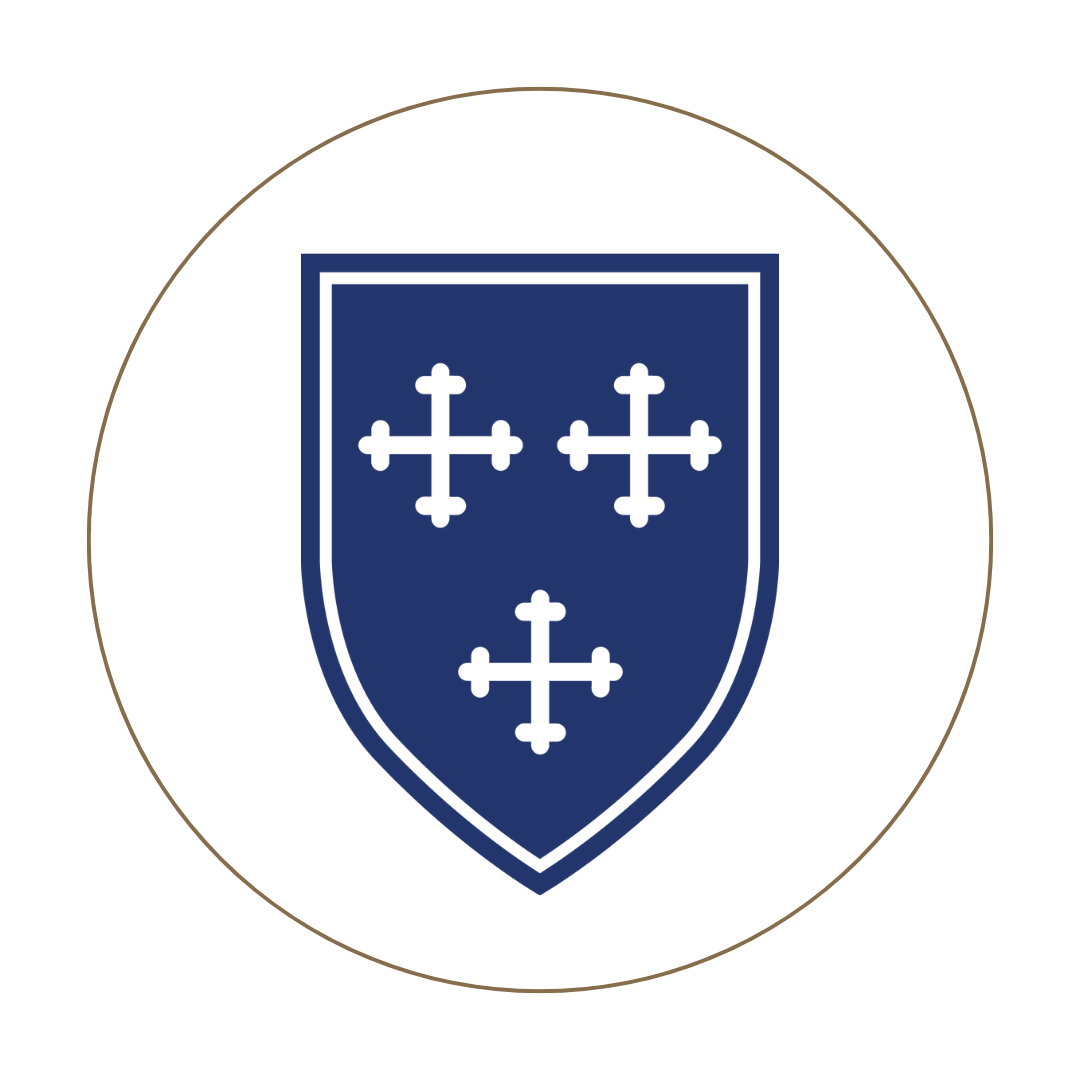ESDistinction In Action
May 1, 2024
This article was initially published in The Crest: Spring 2024 Edition by Rebecca Brady, Chief Academic Officer.
As we make progress towards achieving the goals of our strategic plan, ESD2030, we aim to guide students to become their best for themselves and the world. Through ESDistinction: Curriculum of Purpose, we are enhancing and aligning our academic program, distinguishing our academic identity, and constructing our value for today and tomorrow’s students. With our mission, “Igniting a life of purpose through the development of an educated conscience,” as our north star, ESDistinction: Curriculum of Purpose seeks to:
- Instill the skills, dispositions, and virtues to help students find purpose and lead fulfilled lives
- Integrate real-world intellectual experiences that assist in discovery of purpose
- Expose learners to a best-in-class faculty
- Help students develop personal academic narratives that differentiate them from other high school graduates and college applicants
- Provide meaningful interactions with the greater Dallas community, thereby exposing students to a wide range of industries and people
Through aligned, intentional programming, students develop essential skills, live our Episcopal virtues, dive into high-interest curriculum content, and explore and contribute to our local and global communities. ESDistinction is scaffolded to provide students with opportunities of discovery in lower school, exploration in middle school, and cultivation of skills in upper school. Students reflect regularly to discern their passions and purpose, connecting our mission, our expectations for students, the experiences students have in the classroom, and their extracurricular activities. Our goals for ESDistinction this school year include identifying teacher leaders for our curriculum network coordinator and academic dean positions, continuing to build our curriculum network framework, expanding our discerning purpose programming, and connecting with service learning and community resources. To align our curriculum networks, we are establishing the following key components in each network:
- Purpose
- Big Ideas and Goals
- Lower School: Discovery of opportunities and experiences
- Middle School: Exploration of opportunities and experiences
- Upper School: Cultivation of opportunities and experiences
- ESD Community Connections: Clubs, WORX, alumni
- Dallas Community Connections
- Global Community Connections
One of our planned curriculum networks, Business, Entrepreneurship, and Marketing, has sparked a high degree of interest in our community, providing momentum to Business Curriculum Network leader Amy Livingston to develop a compelling concept for the network that will be used as a template as we build future networks.
Our goal is to develop six to eight curriculum networks to achieve the vision for ESDistinction, helping students access curriculum and have real-world experiences in fields that ignite their purpose.
Currently, we are in the planning process for five of the eventual six to eight curriculum networks, with additions in the arts and humanities coming soon:
- Business, Entrepreneurship, and Marketing
- Leadership, Government, and Public Policy
- Global Education and Citizenship Awareness
- Computer Science, Engineering, and Design
- Health Science and Wellness
What does ESDistinction look like in action?
Here are some examples of the great work our students and faculty are doing that align with the vision for ESDistinction:
In third grade, students discover the basics of financial literacy. Their first focus is understanding needs vs. wants, personal budgets, and charitable giving. During the unit, there is a connection to service learning through participation in the food drive. Then, students learn about the process of creating a business, including managing different types of debt. They engage in a stationery store project to practice their business skills, including experiencing jobs in the stationery store business through partnering with the Design Lab and Math Enrichment. The jobs include designing logos, creating stamps, writing ads for their store, working on the assembly line, and selling their product. There are clear parallels between this discovery of financial literacy to later coursework and skill building through lower, middle, and upper school at ESD.
“We are very excited to see the ’ah-ha‘ moments our students are having and to see the seeds we are planting in helping them to deepen their understanding of financial literacy.” - Kim Bostian, Third-grade teacher.
The fourth-grade Leadership Workshop provides opportunities for students to discover the qualities of effective leaders, discern their strengths from a leadership lens, and practice social-emotional skills. Students grow their self and social awareness through completing the Strengths Finder Assessment and reflecting on how they show up when they are in a group. Students hear from guest speakers who have leadership roles at ESD, prepare for public speaking, and reflect on their personal presence. Students also serve the lower school community, which allows them to practice self-management and responsible decision-making. Students serve their school community through maintaining the lower school garden, assisting the Beginner students at carpool, filming the morning announcements, and returning items from the Lost and Found.
When asked about the experience of the fourth-grade Leadership Workshop, a fourth-grade student said, “I like it because it teaches us how to be good people and how to be a part of the community. It helps me learn about my strengths and blind spots. It’s important so you can work on yourself and grow more as an Eagle.” Another fourth-grader shared, “It has taught me that I’m an achiever, discoverer, and organizer. I like the Speedy Speaker because we get to learn about people.”
Upper school student Jake Infante ’25, shared his experiences with the Students Shoulder-to-Shoulder program in a recent chapel talk. Jake’s interest in immigration issues was sparked when a childhood friend and teammate experienced a family separation. While in San Diego, Jake learned about the history of the U.S.-Mexico border while exploring the issues of globalization, migration, human rights across borders, race, and racism. When he returned from his Shoulder-to-Shoulder experience, he interned in an immigration law firm. He witnessed firsthand cases where the stakes were high for immigrant families. Jake has been accepted into the Applied Ethical Leadership program through Students Shoulder-to-Shoulder, in which he will continue to make an impact in the field of immigration. Working with Immigration in America teacher Marcela Garcini, Jake has visited a refuge center and guided subsequent class discussion, he has given a chapel talk, and he organized a speaker for the class. Jake has connected his personal interest, service learning, chosen courses of study, and an internship experience in a field that ignites his sense of purpose.





